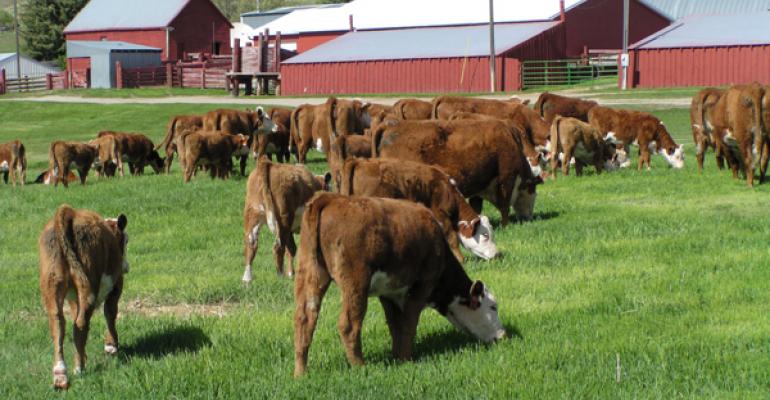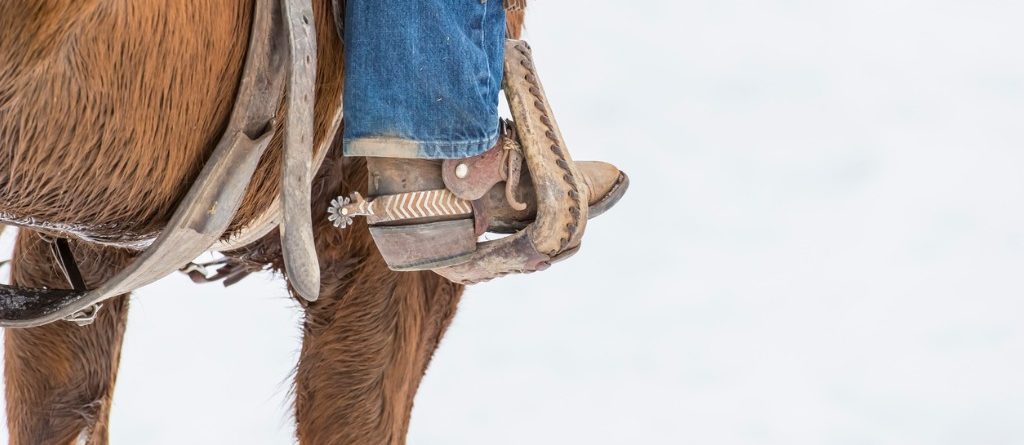Ideally, a cow lease agreement is equitable for each party. But if you aren’t re-analyzing your budget and lease agreement annually you may not be getting that.
Harlan Hughes | Aug 05, 2019 BEEF Magazine
In response to my study herd manager’s request, I have constructed a 2019 beef cow budget for his herd so that he can explore the economics of leasing his beef cow herd to a neighbor. In this analysis, my study herd manager will be the “owner of the cows,” and his neighbor will be the “working rancher” for this proposed leased cow business arrangement.
Projections for the herd if operated as in the past: The current herd, as my manager has operated it in the past, is a 250-head, spring-calving cow herd with an average calf date of March 30. The business year for this beef cow herd goes from weaning to weaning.
Related: What is a fair beef cow lease?
The weaning date target for this herd is Oct. 20, 2019, projected to produce a 204-day average age of calf at weaning and a target average sale weight of 577 pounds for the steer calves. This target weaning weight is based on a target weight gain of 2.31 pounds per day, giving a projected weight per day of age at 2.86 pounds. These data came from the average of his herd performance records over several recent years.
My current projected October sale price for 2019 is $173 per cwt for steer calves. Gross income, including cull cows, cull bulls and cull open heifers, is projected at $927 per cow.
Related: It’s time to review lease & cow-calf share agreements
Total projected 2019 production cost for my manager, if he runs the herd as in the past, is $855 per cow (Figure 2). I’m projecting a net return to labor, management and facilities of $84 per cow, or $21,000 for the total cow herd, selling calves at weaning.
This projected $84-per-cow bottom line in Figure 2 for his 2019 herd compares to the actual $150 per cow for 2018, and actual $274 per cow for 2017. Note that the bottom lines summarized here are the calculated returns to unpaid operator and family labor, management and investment capital.
Want more details? Read this: WHAT IS A FAIR BEEF COW LEASE?
The $855 predicted production cost per cow for 2019 presented in Figure 2 is not a full cost budget, because not all resources consumed are expensed out. The nonexpensed resources are deferred labor wage, a management charge, and the cost of investment capital. Figure 2 is basically the budget format that I used with ranchers over the years when I analyzed the economics of their beef cow herds.
A detailed list of the livestock overhead expenses listed in Figure 2 is presented in Figure 3 for clarification to the readers of my column.
Evaluating this same herd under a beef cow lease arrangement: To do this, we need to construct a full cost budget, where “all” resources consumed during the business year in the operation of this herd are charged in at “full” economic costs, based on fair market price. Each production expense is then allocated to one or the other of the business partners (Figure 4).
For example, feed costs are all allocated to the working rancher. A labor charge based on eight hours per cow and a $15-per-hour wage is allocated to the working rancher.
A management charge is prorated to both partners, with only a small amount allocated to the cow owner. The capital cost of investment in cows and bulls is allocated all to the cow owner. Building and facility investment is prorated to both business partners.
Full cost allocation to business partners: Figure 4 presents a summary of the cost allocation to each business partner as I presented it to my study herd manager. A deferred labor, management charge and investment capital cost are all included in this full cost lease budget.
A lot of analysis went on behind the scenes to construct Figure 4. For example, feed costs were projected by estimating daily feed fed per cow per day by 15-day intervals over the total calendar year. The quantity of each feed fed, including minerals, salt, etc., was calculate for each 15-day interval and then accumulated for the beef cow business year.
Figure 4 suggests that an equitable cow lease for this herd owner and this working rancher, based on how they will share the production costs, should be 33% of the calf crop going to the cow owner and 67% of the calf crop going to the working rancher.
In this proposed lease agreement, the cow owner:
- gets all the cull cow income and all of the cull bull income
- agrees to provide all of the replacement bulls
- agrees to grow and develop 42 pregnant replacement heifers
The cow owner wants to grow and develop the pregnant heifers on his own ranch outside of the cow lease and provide them to the leased cow business at the going annual market price each year — a somewhat unique twist to this proposed beef cow leasing arrangement.
When cull income from the cull cows, cull bulls and cull open heifers is added to the 33% of the calf crop that the cow owner gets, it figures out that the cow owner gets 40% of the enterprise income, and the working rancher gets 60% of the enterprise income. If replacement heifer costs were handled differently and/or the replacement bulls were handled differently, the equitable calf crop would also be different.
Today’s economic reality: Taking this analysis one step further, the economic reality is that I am not projecting very high profits for 2019 cows. Feed costs are projected to be higher than for recent years, and the market price of calves is projected a little weaker than in 2018. My final analysis of this equitable lease agreement projects an earned annual net return of $3,582 to the cow owner and a deferred wage of $7,286 to the working rancher.
I recommend a reallocation of costs be done annually. I also recommend that a new budget be prepared annually for the lease cow arrangement, and that the equitable calf share percentages also be recalculated annually.
While I know that most leased cow arrangements are fixed and are repeated over several years, relative costs do change through time — suggesting that the equitable calf share percentages to each business partner should also change through time.
Hughes is a North Dakota State University professor emeritus. He lives in Kuna, Idaho. Reach him at 701-238-9607 or harlan.hughes@outlook.com.









